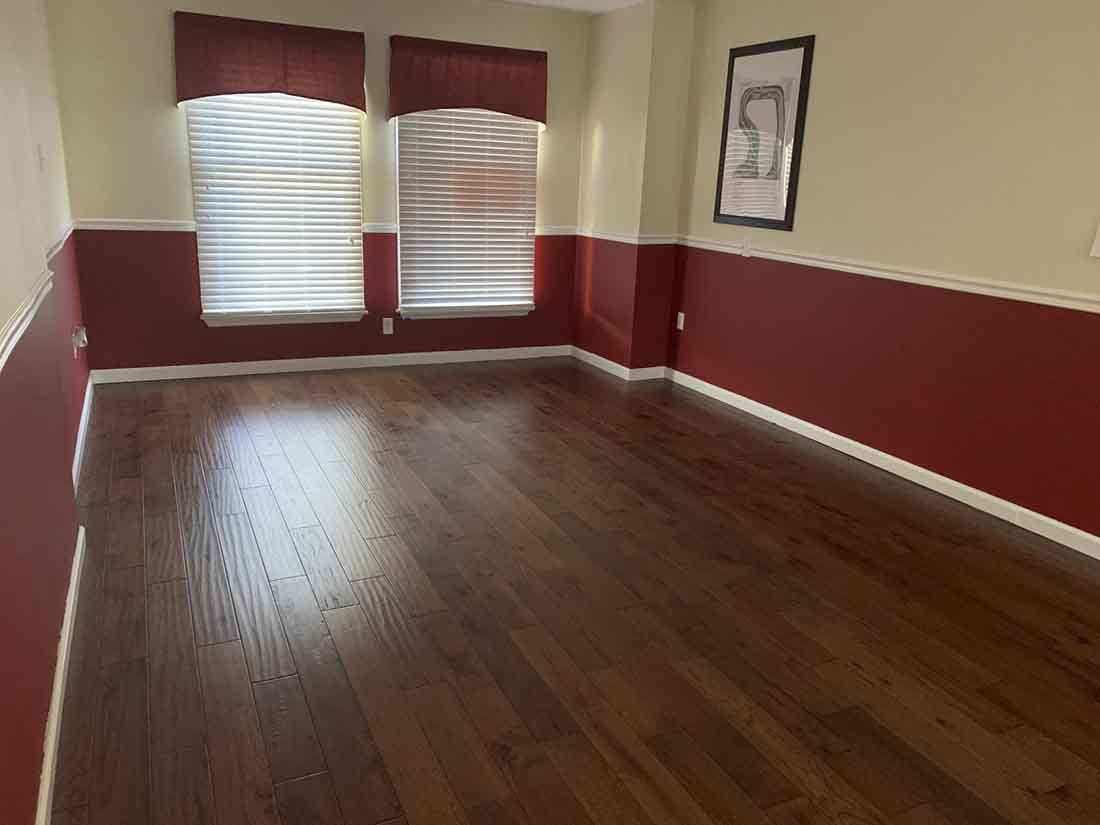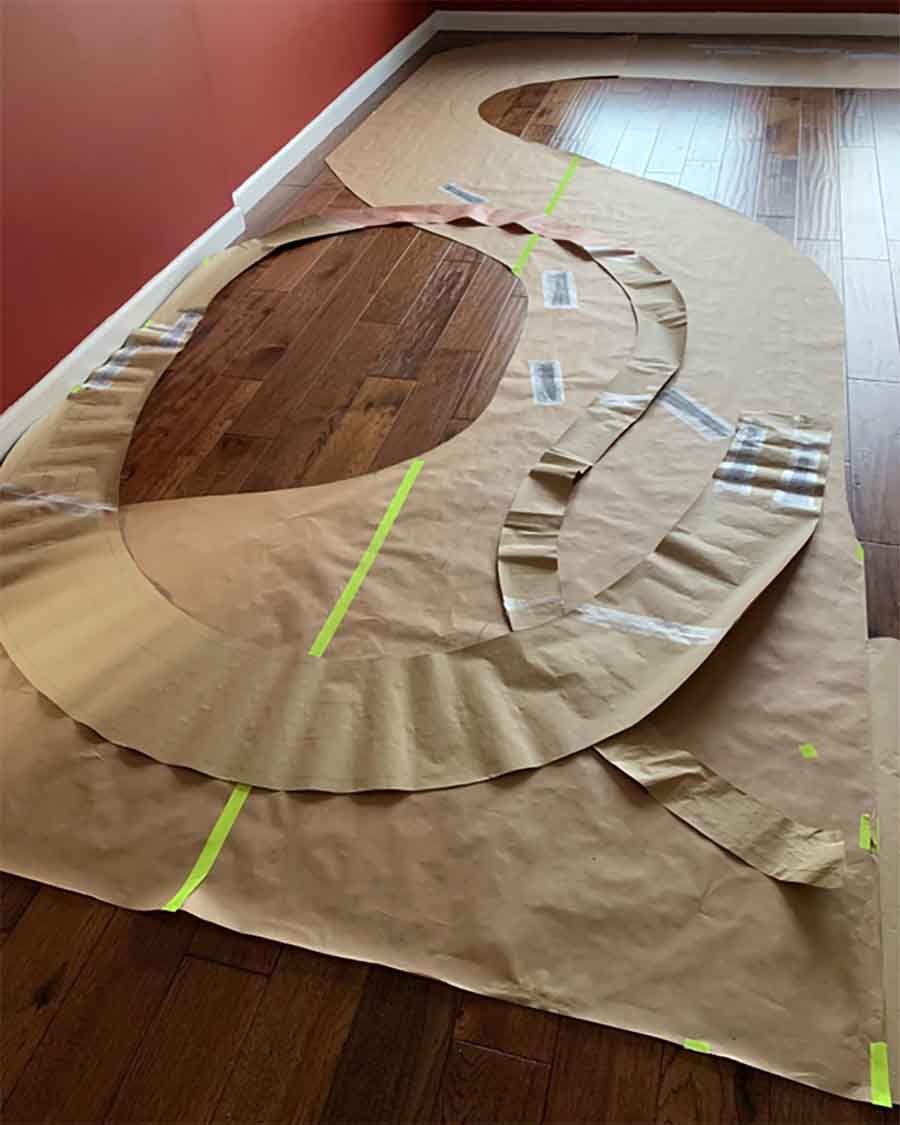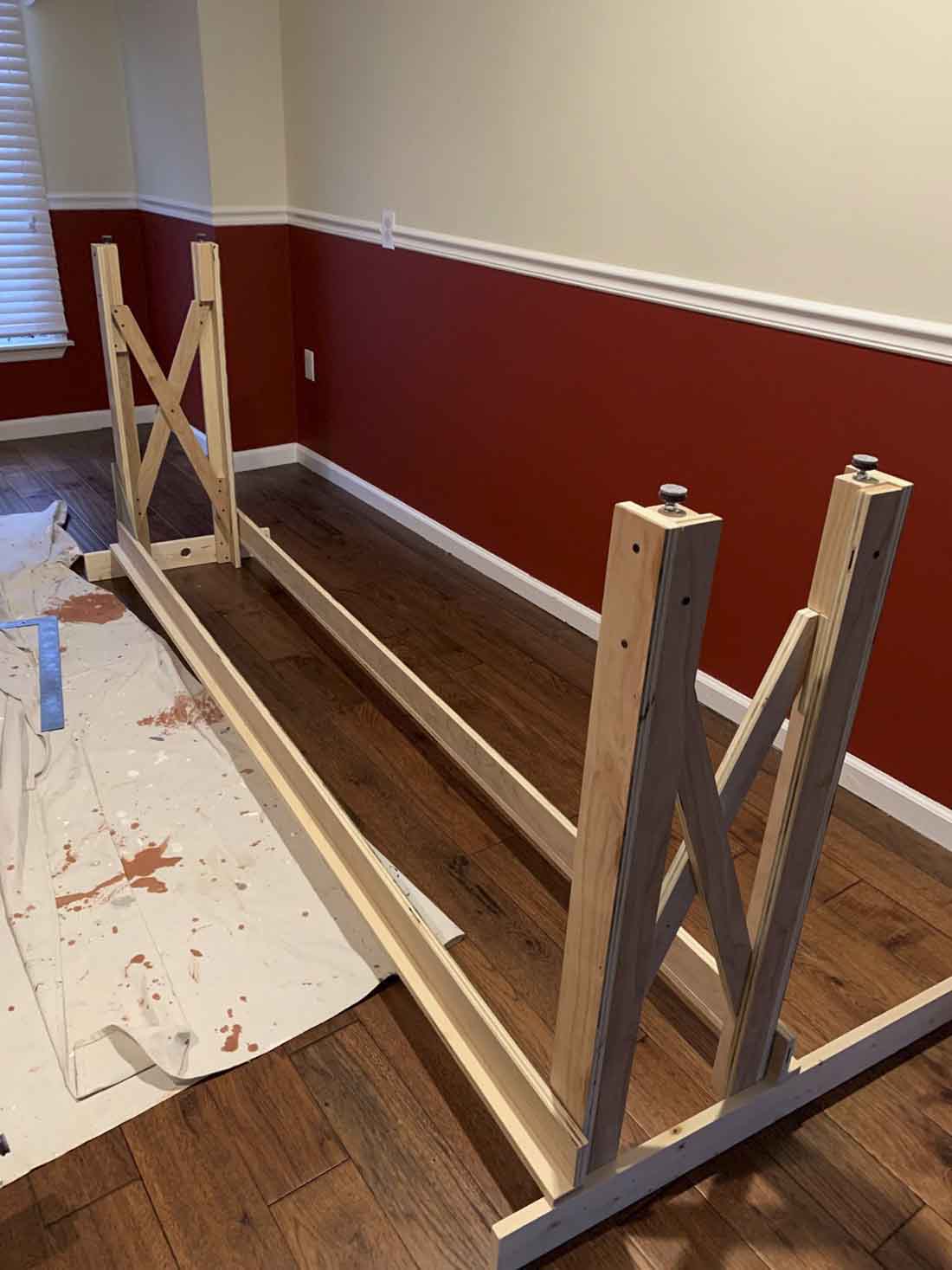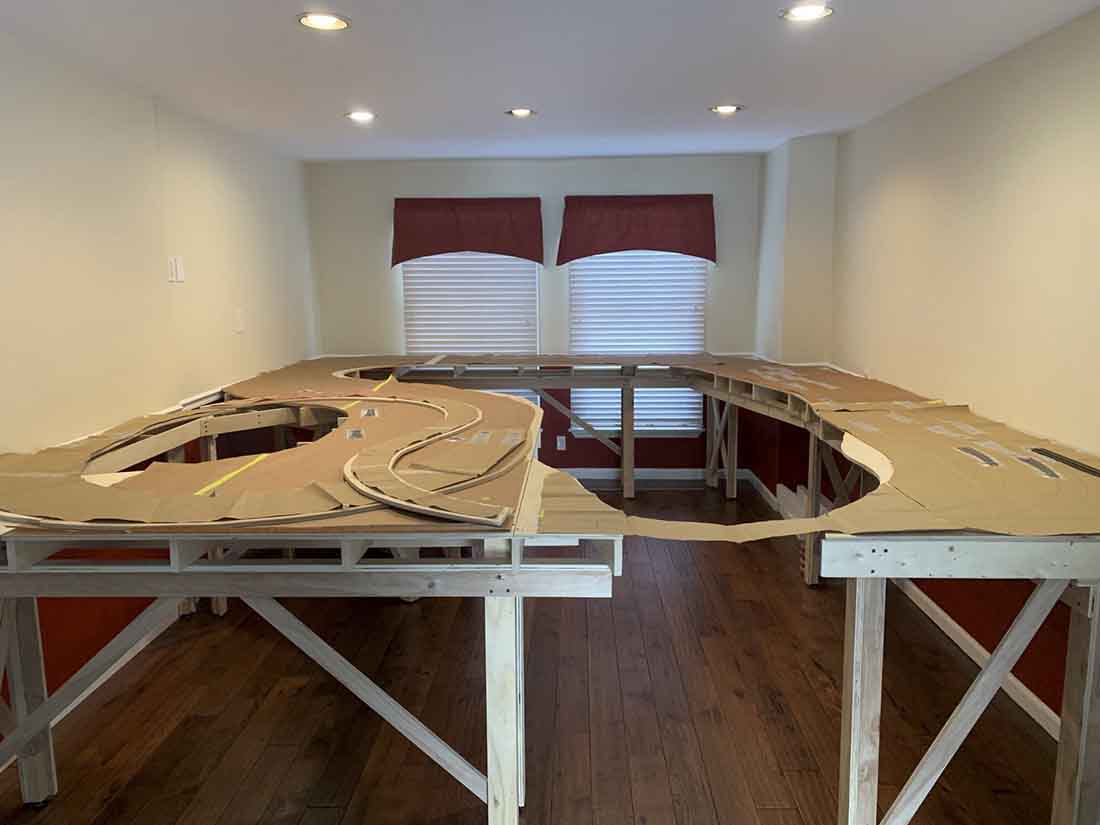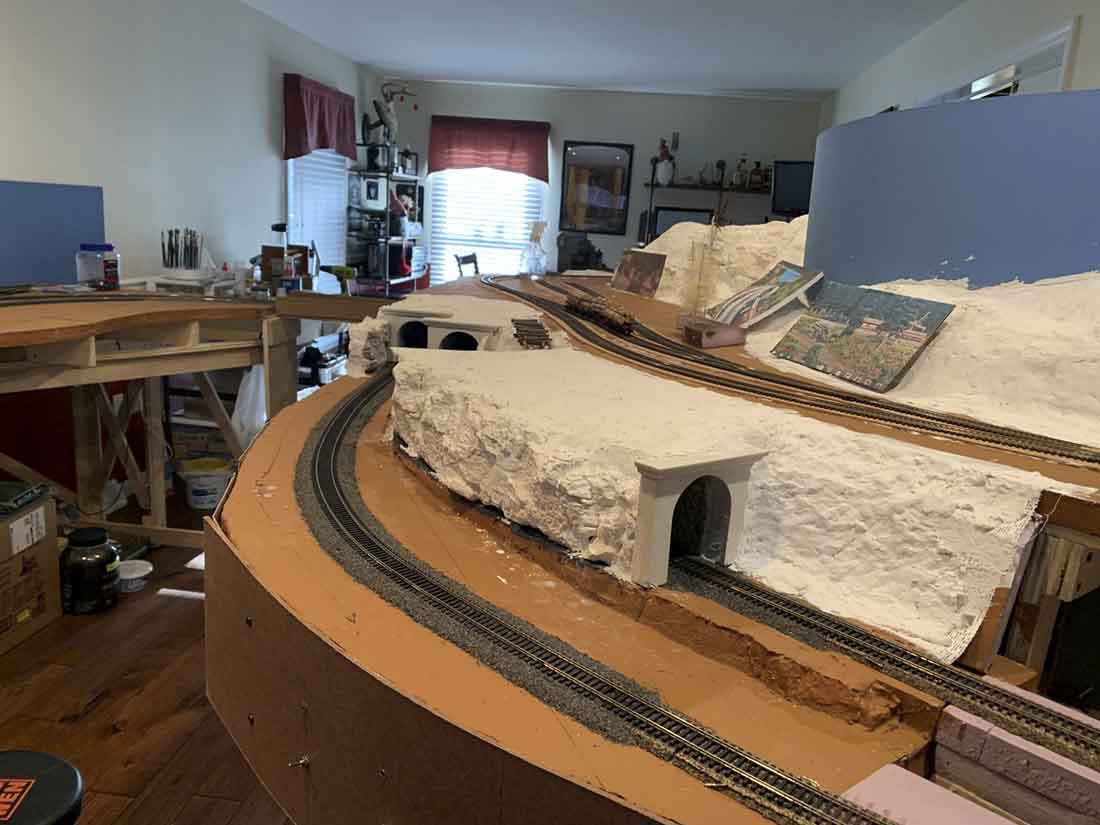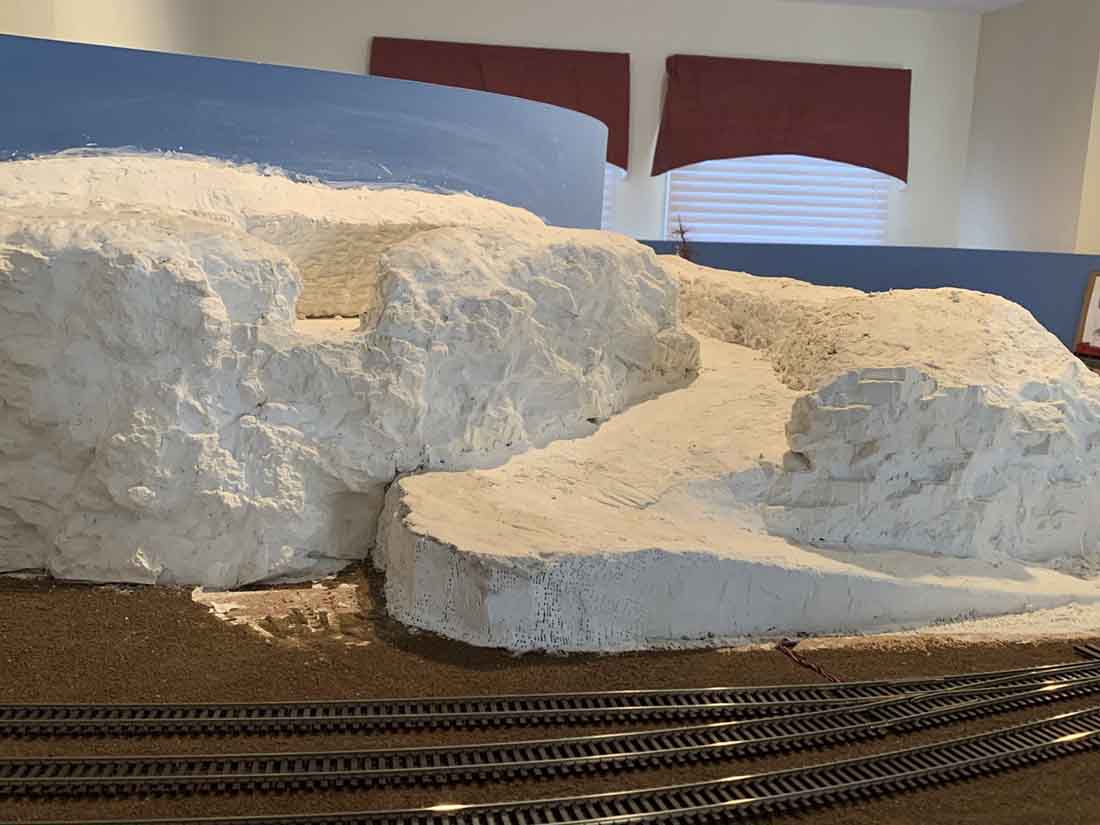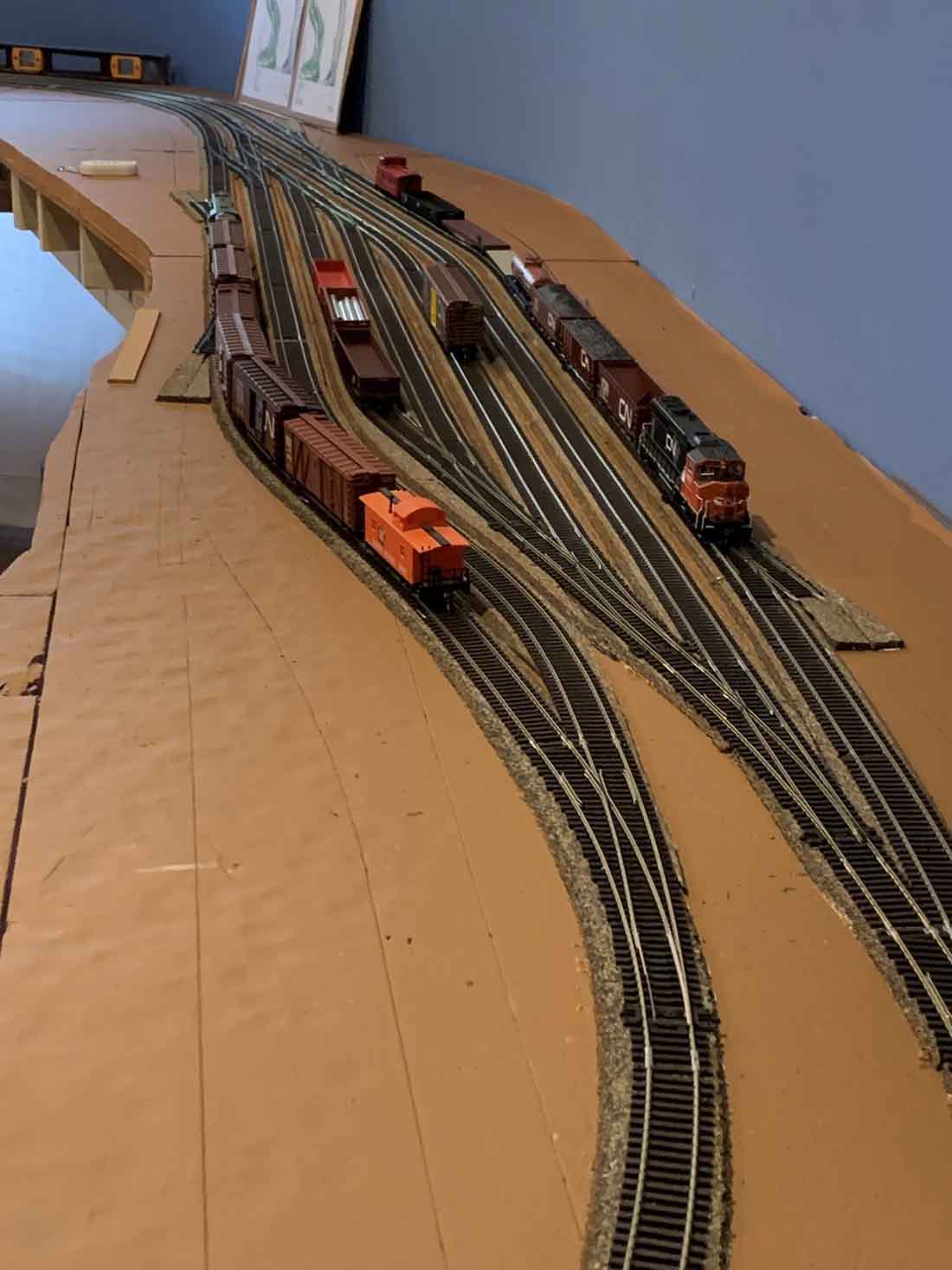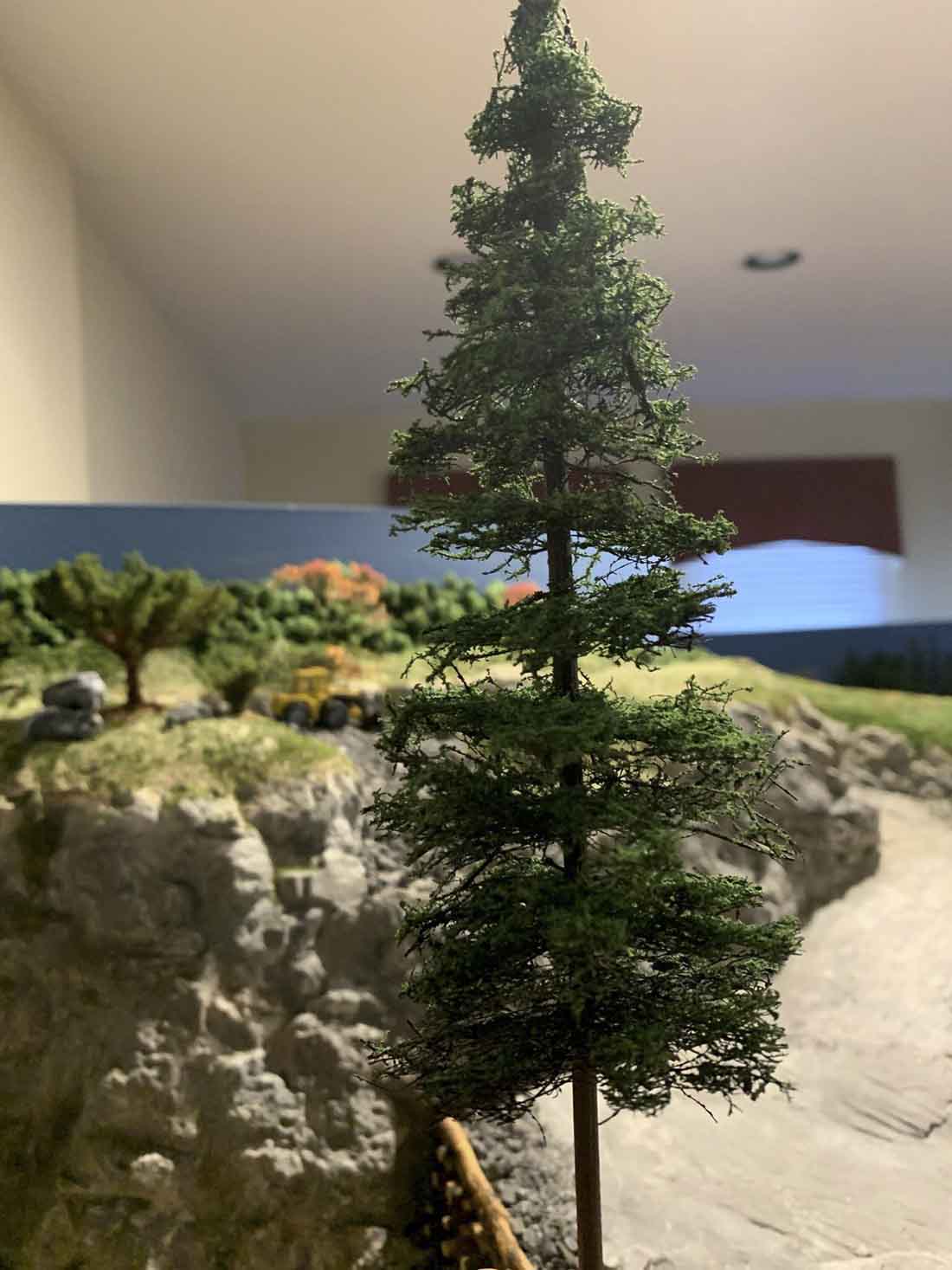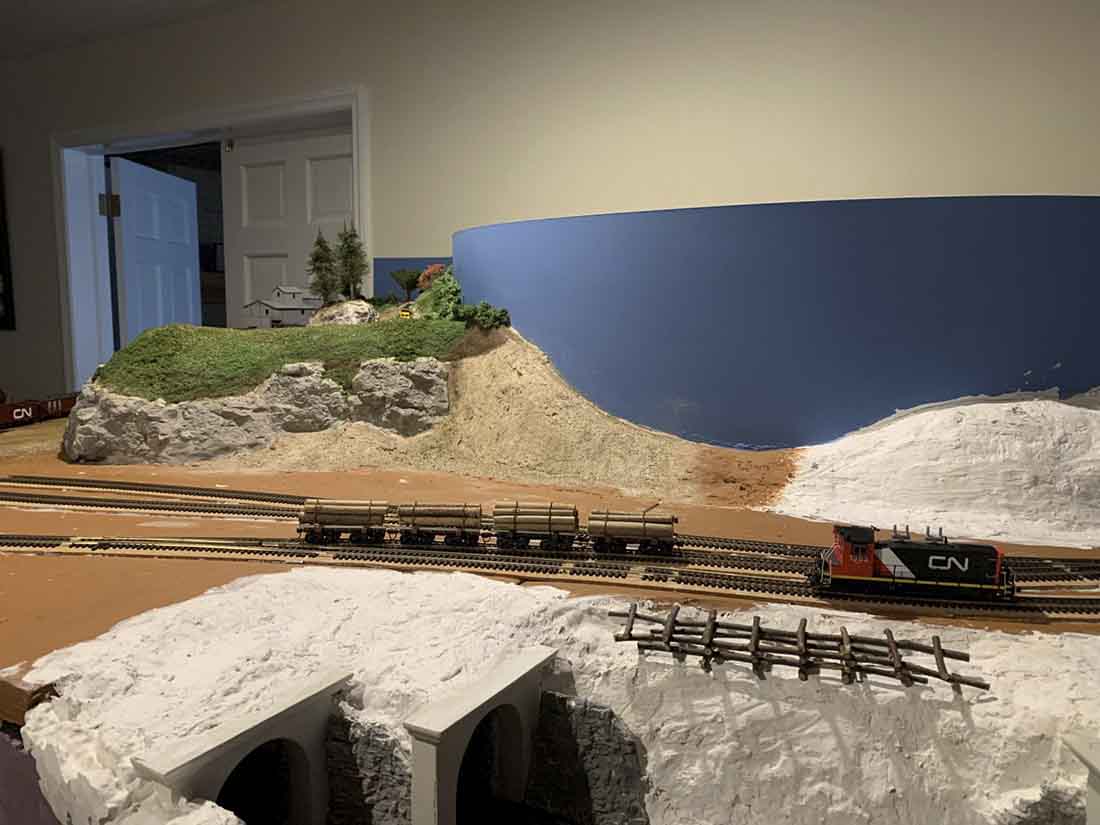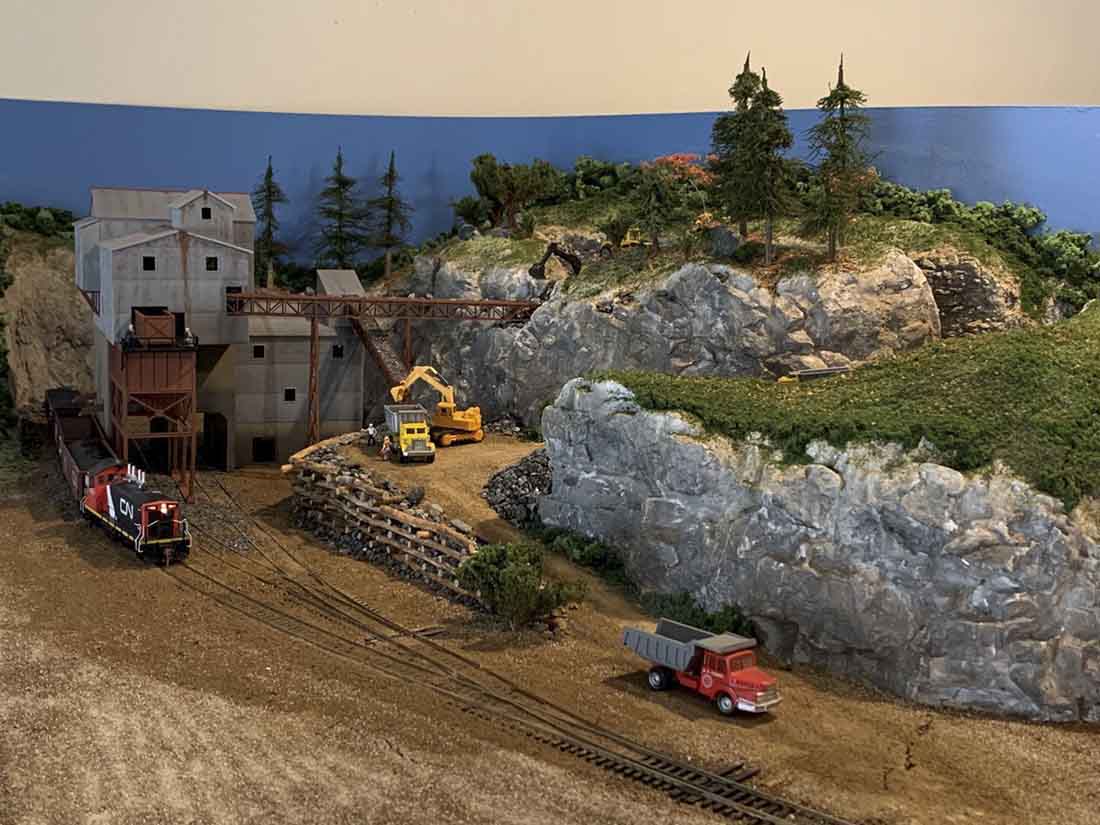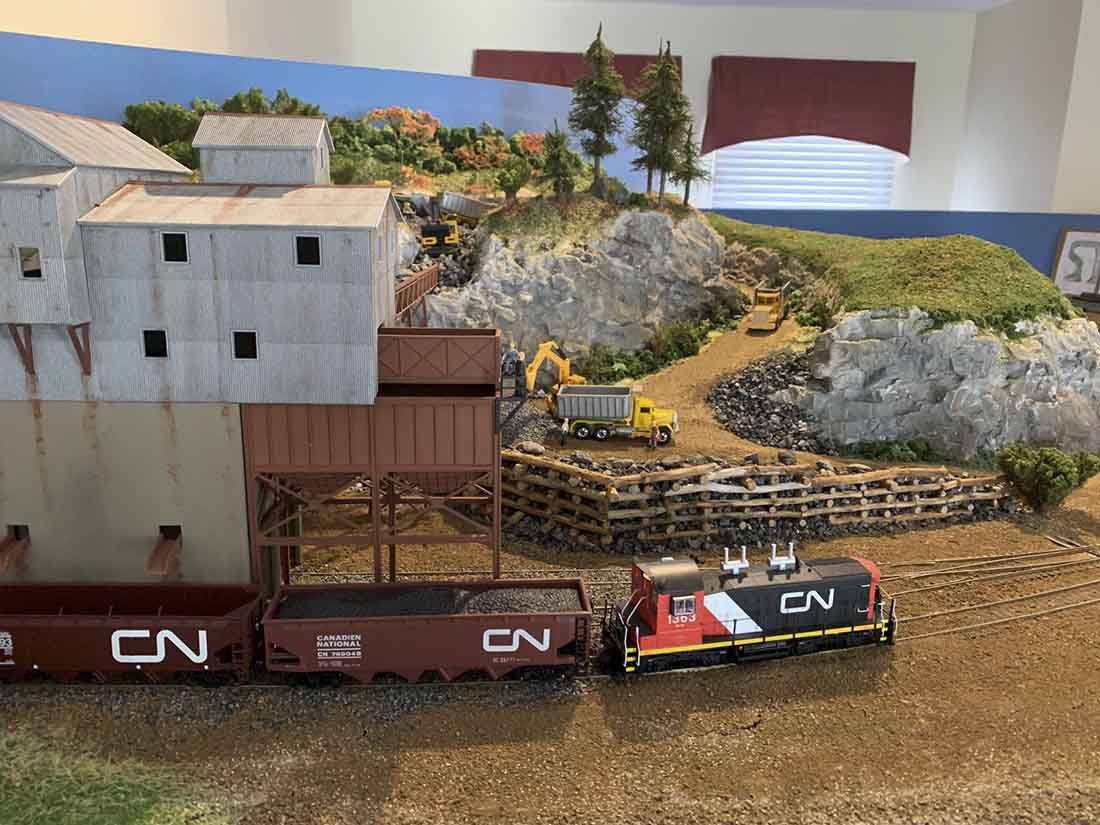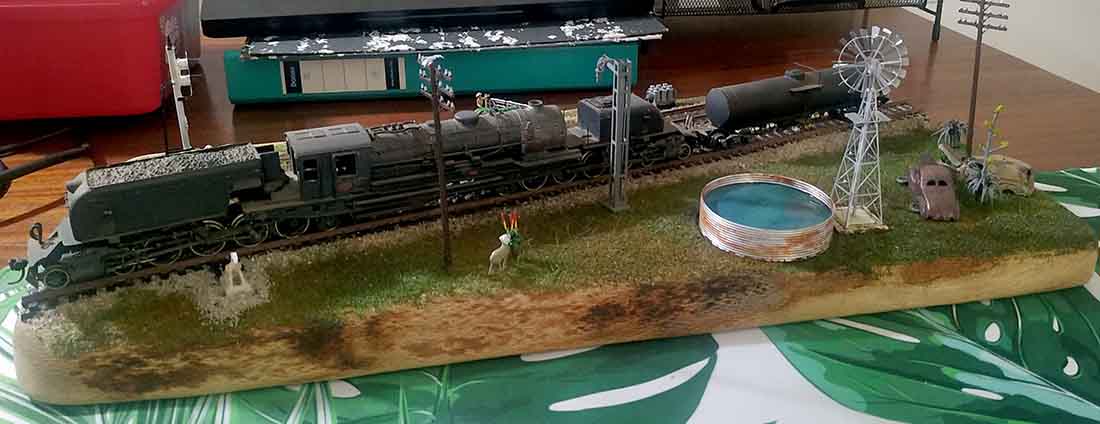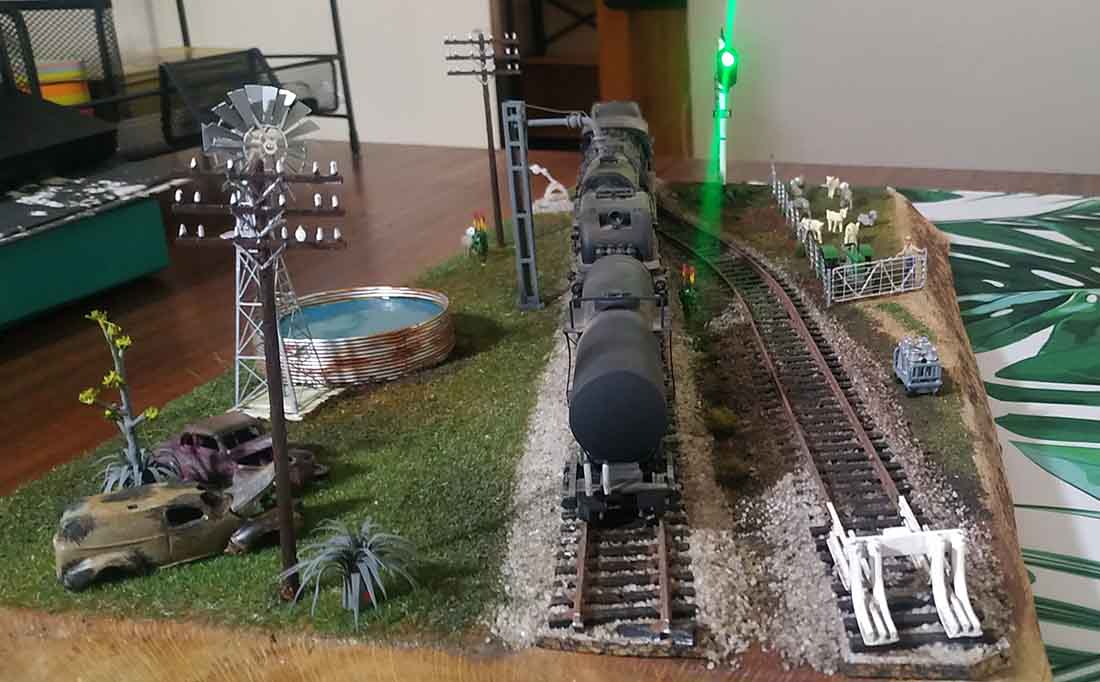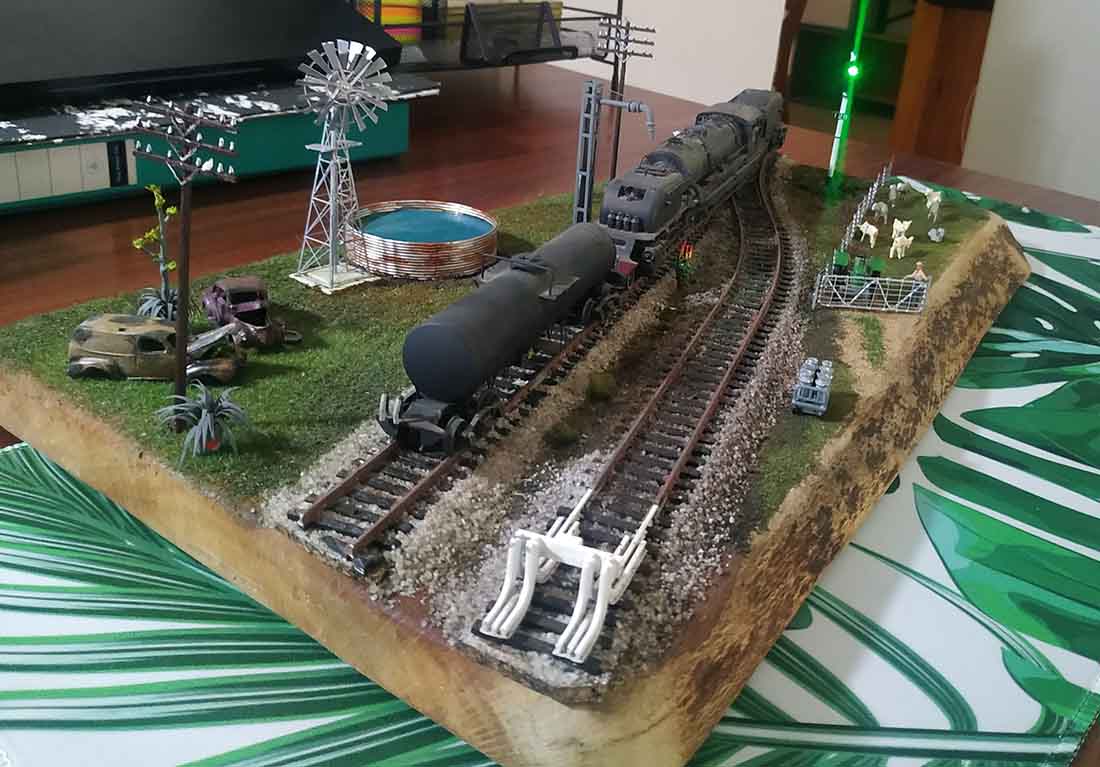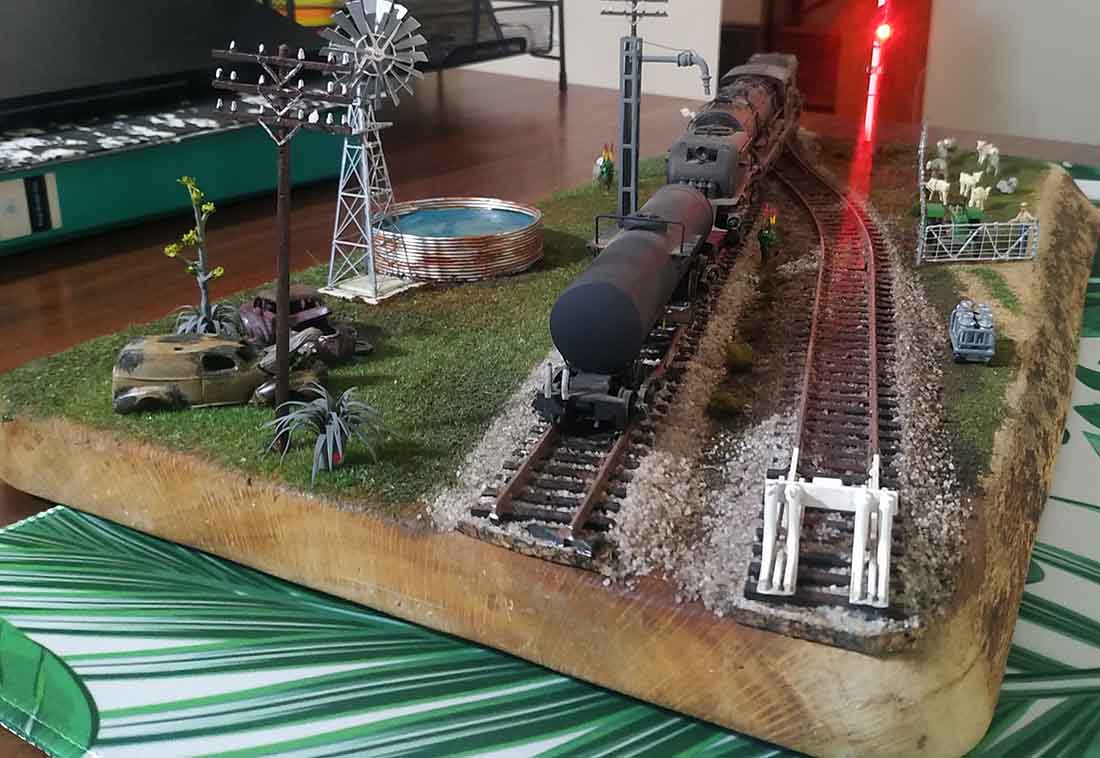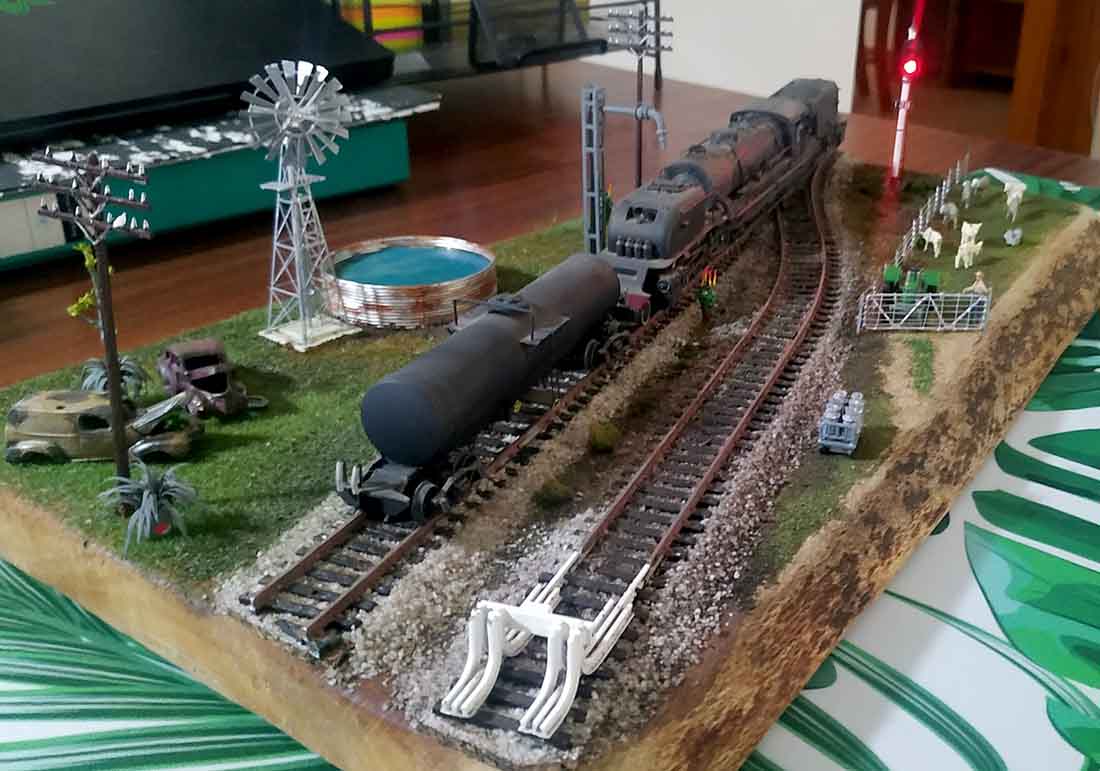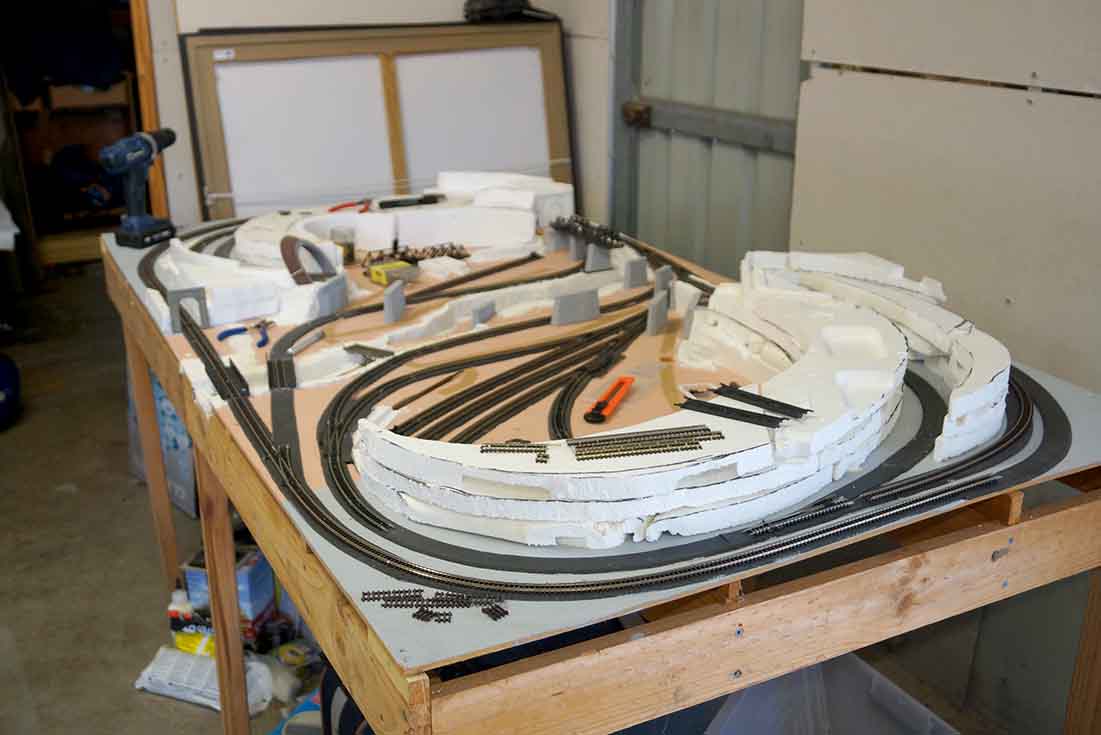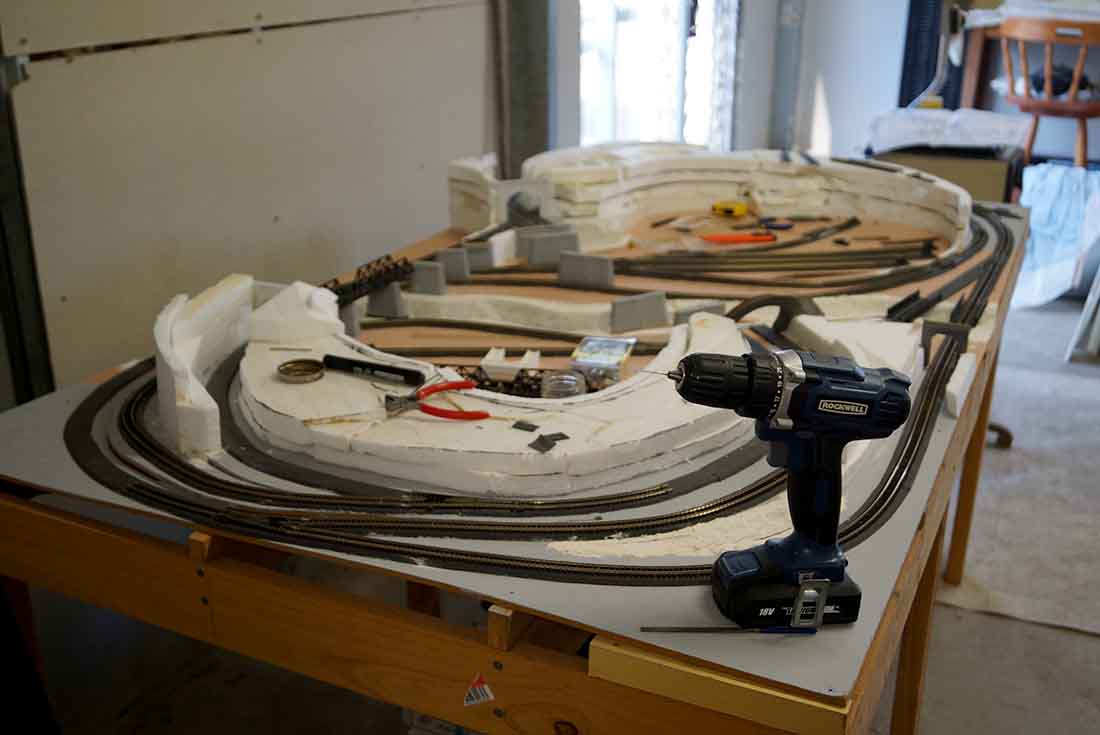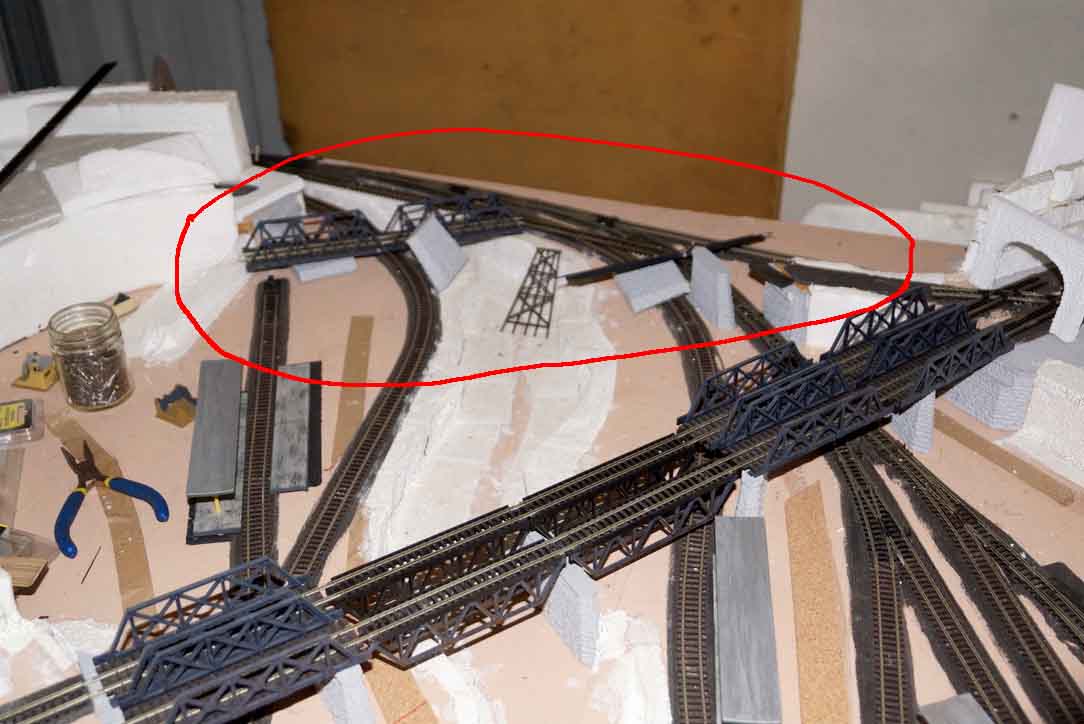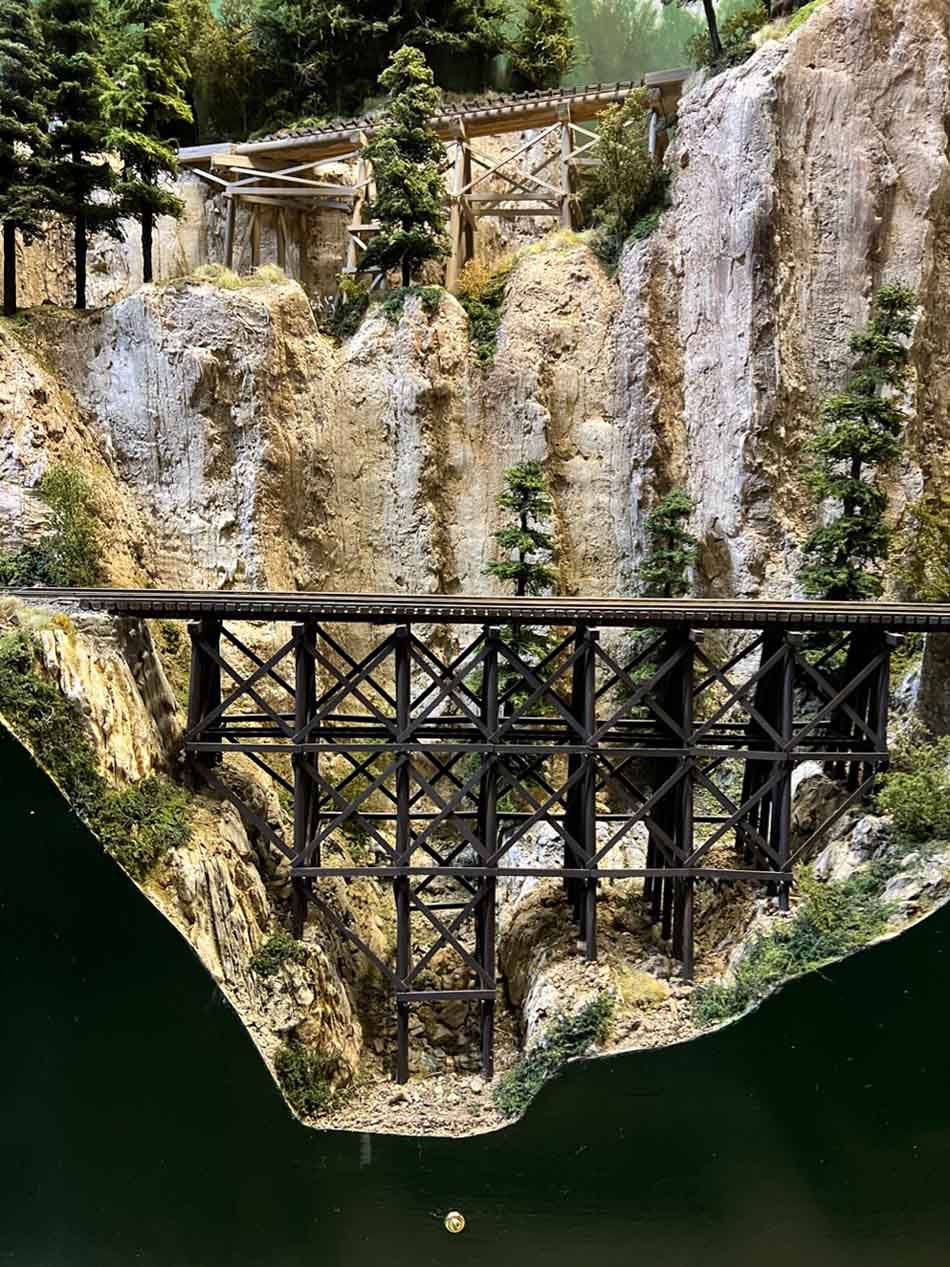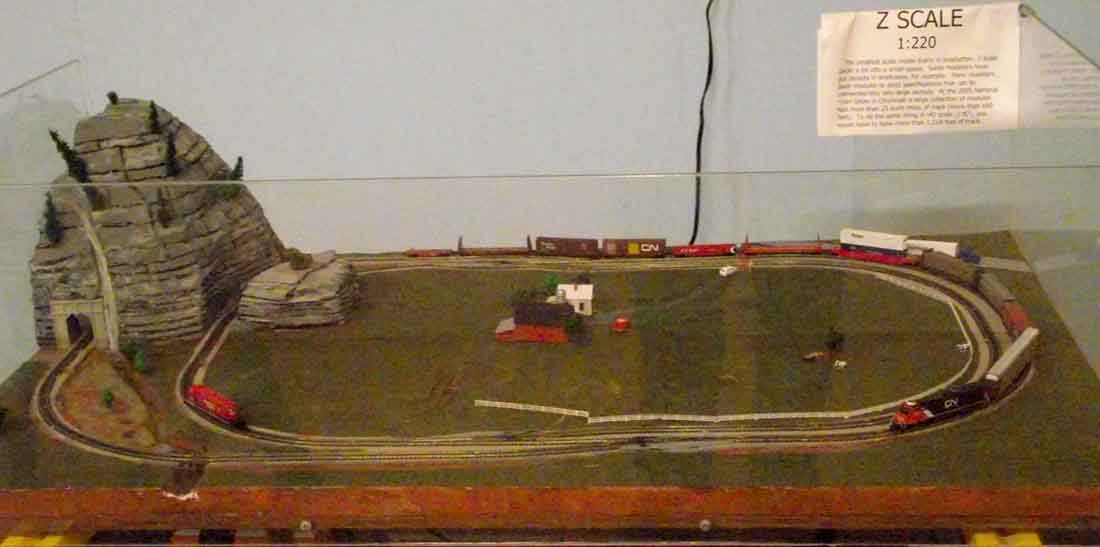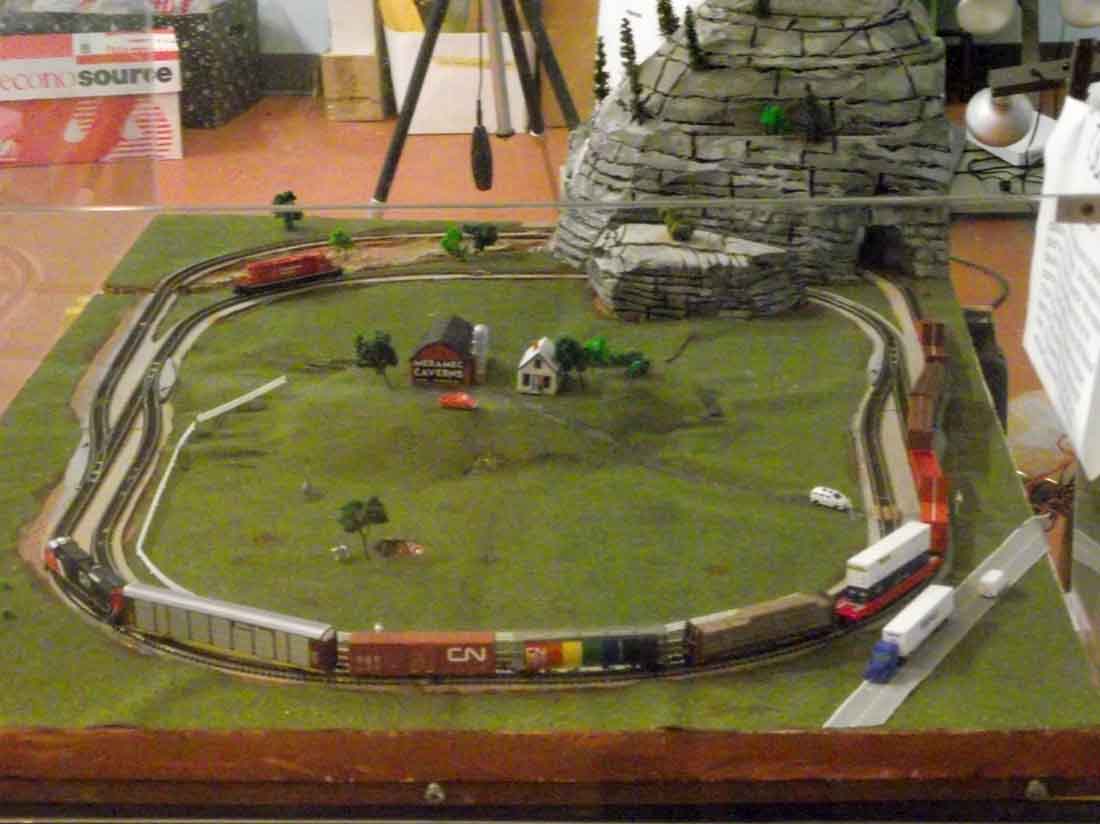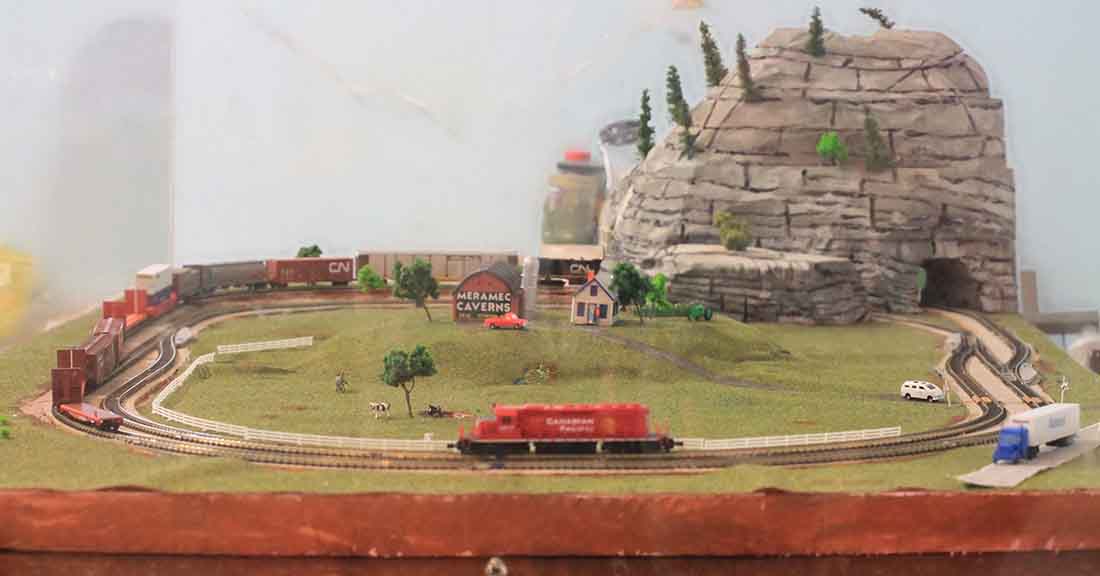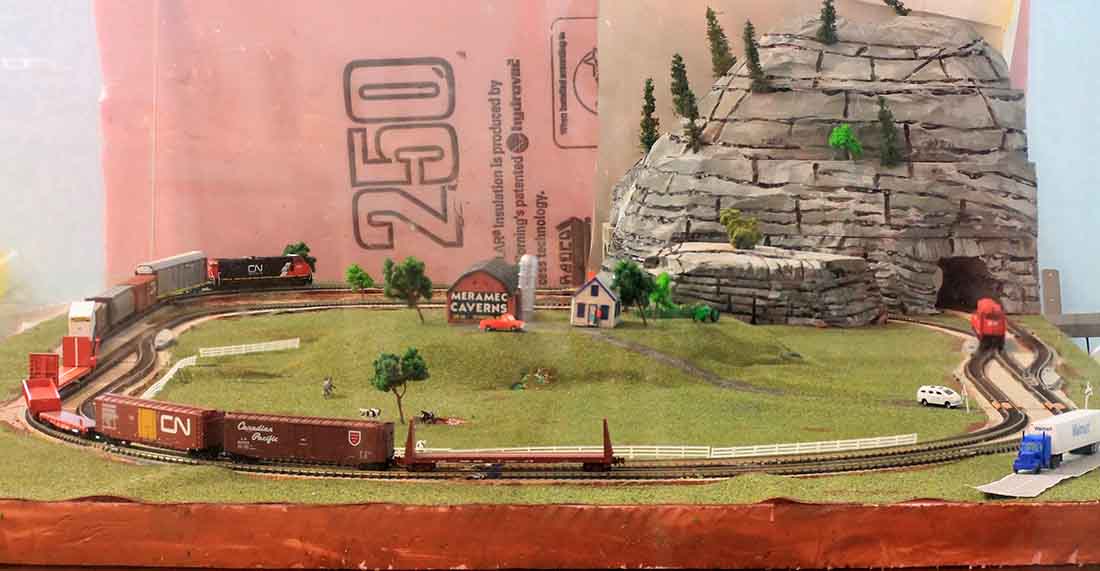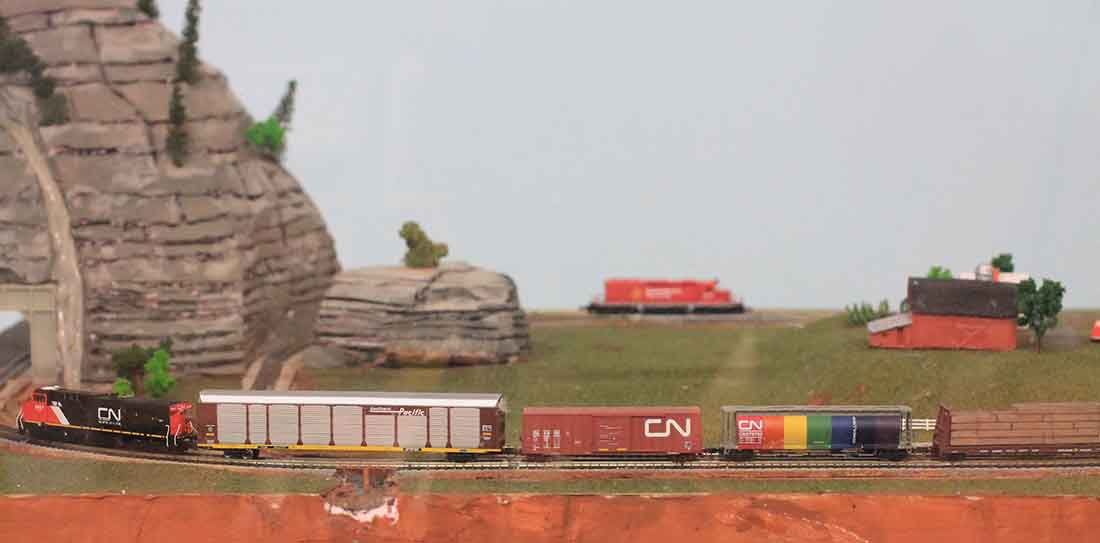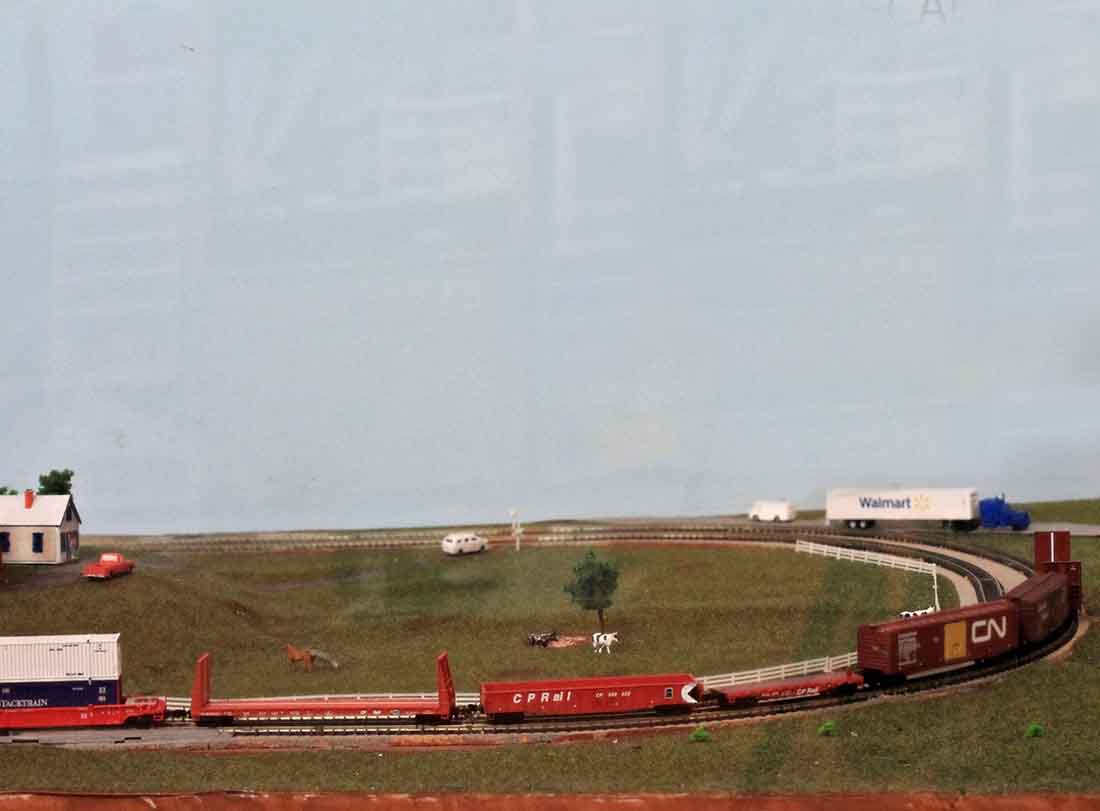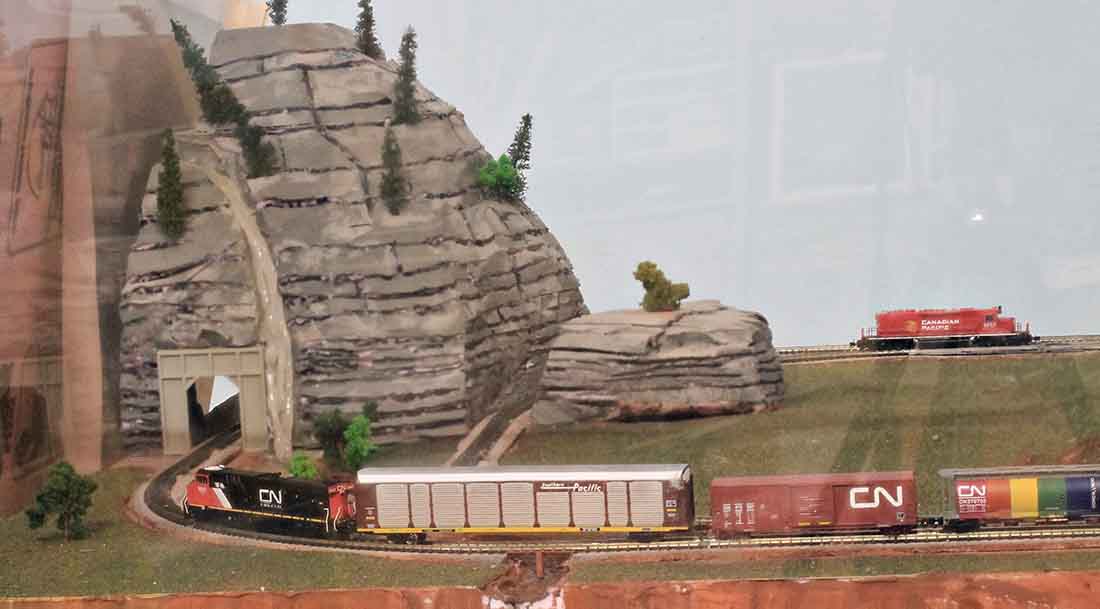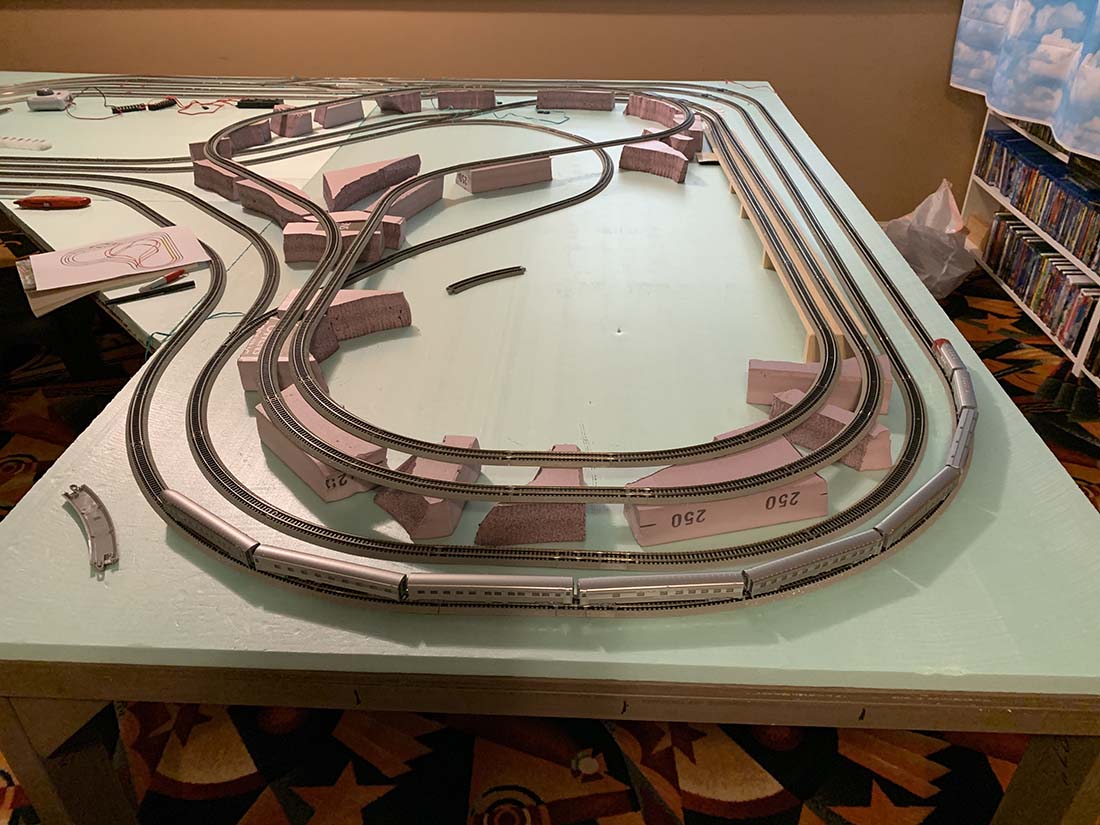Boyd’s been in touch. His retirement is going to consist of his model train hobby in the winter months, and my word, what a start:
“Hello Alastair,
Let me start by saying I enjoy your daily emails, and have drawn inspiration from the various layouts presented.
I have debated for a few months now whether to send in something from my own layout. There are 3 reasons really for my hesitation.
First, nothing I am doing is new, in fact some of it was picked up from your readers, some from reading anything could get my hands on, and much from watching countless YouTube videos.
Second, nothing I have done comes close to matching the many beautiful layouts I see in your daily mails.
And third, and this was the biggest stumbling block, despite how stunning many of the above mentioned layouts are, someone always has to find a reason to criticize them, and this really pisses me off.
The folks who submit their work are justifiably proud of it, I guess some people just aren’t happy unless they are miserable.
In the end though, I did decide to send you a note, because simply put, it is my railroad, I will do it as I like, and I really don’t care if someone finds it not to their liking.
More importantly, I know how you like to encourage folks to get a start, so if I, someone with no previous experience, can spur on even one person to give it a go, then it is worth it. Please see fit to use any, all or none of this correspondence.
The back story is pretty simple. Unlike many of your readers I did not have a model railroad as a kid, but I always had an interest.
As I approached retirement, I decided I needed a hobby for the Winter months, so decided it was a good time to get a start on a layout.
Since these questions always come up, I should have mentioned……HO scale, layout occupies a space 12X15 feet.
My layout is not prototypical, it is not meant to be, and never will be. It is a hobby that I can share with my grandkids, and can get enjoyment from as I progress and learn new things.
For now, they are of an age where they just enjoy watching the trains run, but there will be plenty of opportunities for operations as well for their and my enjoyment.
With the exception of a few kits and figures to get started, everything will be home made, trees, flock, buildings, etc.
Going into it I envisioned it to be an 8–10-year project to get the basics in, and as we all know, it will never be completely finished.
Because I wanted to fit in as much as I could in my designated space, and really had no idea how to best do this, I did get assistance with the track plan.
After several configurations, I settled on what is surely an ambitious plan for a novice, but full speed ahead. There will be a gravel company and logging industry on the upper layer, a port area, yard, industrial area and small town on the lower level.
I am 14 months into it now, working mostly in the winter months a few hours at a time.
Here are a few pics showing how I progressed.
Boyd”
Blank slate, track plan on the wall:
Mapping the track plan:
First piece of benchwork:
Getting there:
Starting scenery:
Gravel Company scene nearly complete.
Future logging area:
A huge big thanks to Boyd for sharing this.
I love what he has done, but I loved his narrative even more.
I totally subscribe to his point of view. As the saying goes, “If you can’t say anything nice, don’t saying anything at all”…
I do concede there is a place for constructive criticism, and I’m all for that.
Unfortunately though, every so often a comment that shouldn’t slip through, does.
For this I can only apologise, I do my best.
I manually approve the comments so the site doesn’t get overun with bots and other bad stuff.
I remember once a very ill worded comment got published one bleary eyed Sunday morning.
Fortunately one of you lovely lot mailed me and I was able to remove it.
Anyhow, back to Boyd.
I know what he means about the comments, and I hate to think it stops people sending their layouts in.
He words it perfectly:
“Simply put, it is my railroad, I will do it as I like, and I really don’t care if someone finds it not to their liking.”
Amen to that. Your layout. Your rules.
That’s all this time folks. Please do keep ’em coming.
And if today is the day you get started on your layout, the Beginner’s Guide is here.
Best
Al
PS More HO scale train layouts here if that’s your thing.
Need buildings for your layout? Have a look at the Silly Discount bundle.
